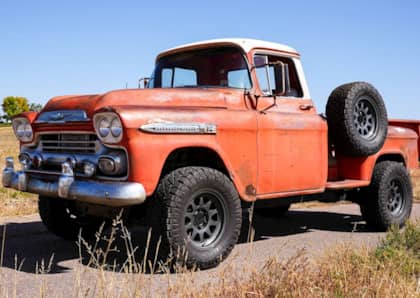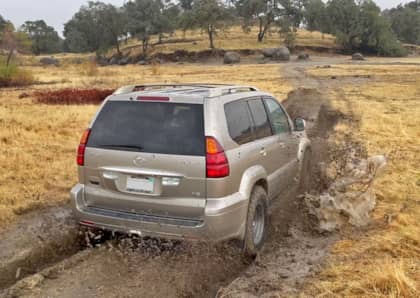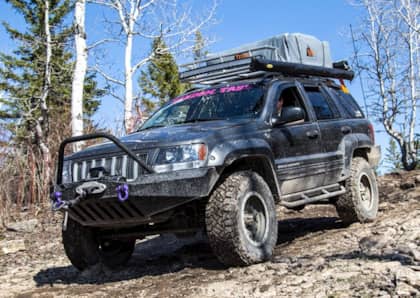The Local Motors Rally Fighter Was The Custom Off-Roader You Built Yourself
Affordable 3D printers and computer-assisted design software have made it relatively cheap and easy for enthusiasts to share, and create their own parts for their car and truck projects. Vibrant online communities, too, are dedicated to sharing ideas about how to improve and modify vehicles from 4x4s to sports cars to race cars, harnessing the power of the Internet and the creativity and experience of grassroots owners.

Flash back a decade, however, and the idea of a crowd-sourced, 3D-printed off-road vehicle sounded more than a little far-fetched, And yet that's exactly the business model that was proposed by Local Motors, a company that tried to launch a revolution with micro-factories and harnessing the energy and expertise of enthusiasts from across the country.
The end result was the Local Motors Rally Fighter, an LS-powered coupe riding on a Baja-friendly suspension setup that provided nearly endless customization while pushing the limits of the technology of its time.
Group-Think
Local Motors (now LM Industries) is based in Phoenix, Arizona, and got its start towards the end of the 2000s. From the beginning, the plan was to go all-in on crowdsourcing and small-volume production, allowing the company to bring a new vehicle to market with a much lower investment as compared to a traditional automaker.

The Rally Fighter embodied these concepts perfectly, having been initially designed by Pasadena Art Center College of Design graduate Sangho Kim and submitted to the company's online community as a potential shape for its first vehicle. The group, made up of thousands of off-road fans and budding designers, were regular participants in the initial conversations and briefs that would translate into the production vehicle.
Strong Base, Endless Possibilities
With its sleek looks locked into place, Local Motors plopped it onto a tubular steel chassis featuring Fox shocks, a solid rear axle, a stout off-road tire, and a 115-inch wheelbase. Suspension travel was rated at 18 inches up front and 20 inches at the rear, and the entire vehicle was built around a 6.2L E-ROD LS V8 crate motor rated at 430hp, married to a four-speed automatic transmission.

In broad strokes, those details—as well as an adjustable ride height (61.25 inches to 69.25 inches) and a track of 65 inches—defined the Rally Fighter. More intriguing was the decision to make every single detail about the vehicle's chassis, body, and mechanicals public knowledge. In effect, this created an 'open source' automobile that could be tweaked and customized by customers to their heart's content.

Translating that open source spirit into a tangible product was accomplished by way of Local Motors 'micro-factories.' Originally, dozens were planned, but in the end only a handful were built (including locations in California, Tennessee, Arizona, Nevada, and smaller facilities on the East Coast). These allowed buyers to come to Local Motors and make use of its rapid prototyping, 3D printing, and proprietary materials manufacturing in the small factory setting required to build the Rally Fighter.
Ahead Of Its Time
As a business model, the Local Motors plan didn't scale as quickly as its owners had originally planned. With a price of just under $100,000 for the high performance Rally Fighter, there weren't nearly as many takers for the boutique Baja bouncer willing to put in the time and effort required to play such a large role in the design process as it might at first seemed (turnkey builds were also available).

Still, the program itself was seen largely as a success. By using off the shelf parts where possible (Honda Civic tail lights, Mazda Miata door handles, a Ford rear end), balanced with the low cost aspects of its micro-factory model, Local Motors was able to come out ahead even with a production run numbering in the low triple-digits.

It also helps that the Rally Fighter itself was a fantastically fun vehicle. Its hardcore suspension tuning makes it a bit of a handful on asphalt, but it's one of the best off-road vehicles you're likely to ever drive, capable of keeping up with a Ford Raptor 4x4 thanks to its dune-friendly chassis and solid power to weight ratio. Making its desert-running chops even more impressive is the Rally Fighter's rear-wheel drive setup, which rarely proves to be a problem even on more difficult terrain.

Although no longer in production, the Rally Fighter occasionally pops up for sale online before quickly being snagged by off-road fans in the know. With the complete plans available free to download, and the significant advances in fabrication tech over the past 10 years, there's not much to stop enterprising individuals from building their own interpretation of the Fighter in their personal garages.
More From Driving Line
- Looking for another weird way to get off-road? How about these 7 four-wheel drive machines that aren't Jeeps?











